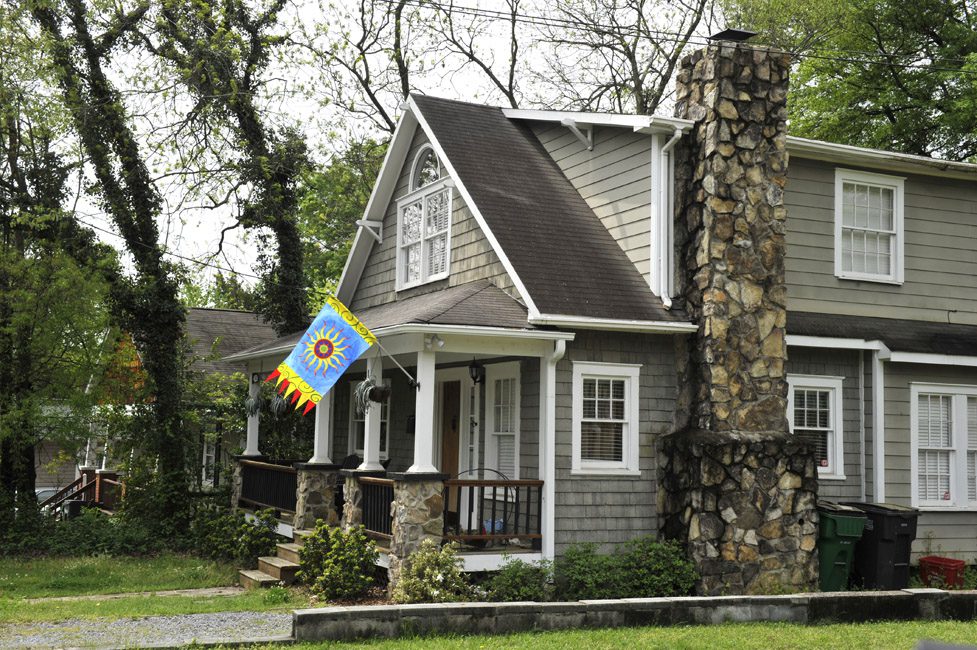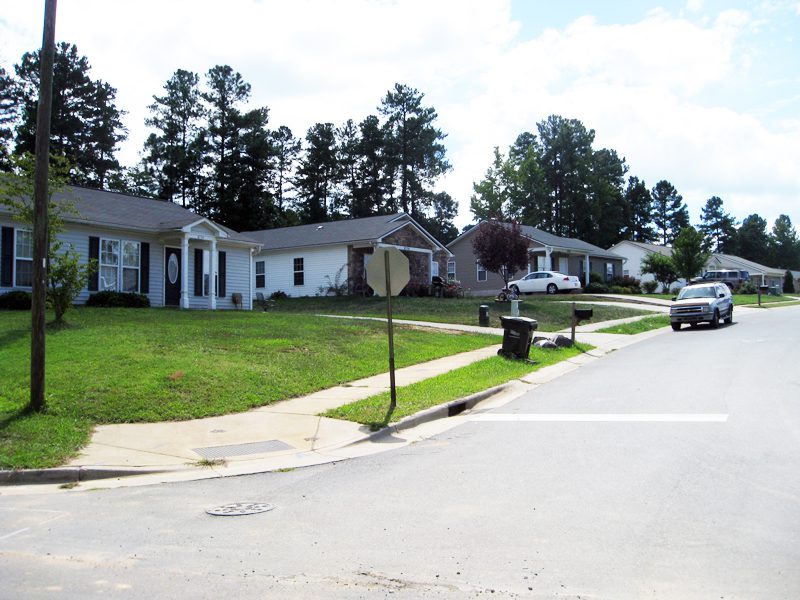In Charlotte housing debate, let’s look at underlying factors

For many decades, the complex and difficult challenges of housing low-income Charlotteans have been the source of local studies, public debate, public policy formation and a variety of actions. This short paper is intended to trace the evolution of the challenges in Charlotte and the responses to them, with an eye toward the future for housing providers, housing consumers, public officials, and others.
Some precepts:
- Moderate-, middle-, and upper-income households are served perfectly well by the dynamics of the marketplace. But low-income households cannot be served by the marketplace because their buying power is too low. That fact always has and always will generate social and political reactions, because those households are cost-burdened and have to deal with problems of housing quality and overcrowding.
- Among households in Mecklenburg County that earn less than 30 percent of area median income, only about one quarter receive a housing subsidy. That means about three-quarters are left to fend for themselves. This means tens of thousands of households in our city aren’t well served by either the housing marketplace or by the housing subsidy world. They’re either doubling-up by moving in with friends or relatives, or paying high amounts of their income for shelter.

- At all levels of government—federal, state, and local—for many decades the political will has generally been lacking to materially increase this subsidy coverage of 25 percent. To quote Joseph Califano, a Cabinet secretary under President Jimmy Carter, “You can only go ‘so far’ at redistributing wealth.” We have not seen the political will to spend the money that would increase this materially. Regardless of who the HUD secretary was or whether the person in the White House was an “R” or a “D,” the appetite of elected or appointed officials—or the general public—is not there to go much over 25 percent.
- Alongside rent subsidies, another goal has been to build new housing in declining neighborhoods. This has long been a goal of government and academia, to counter the aging of housing as it approaches the end of its useful life.
- Easing the geographic concentration of lower-income households has been another long-time goal of policy makers. This relates both to economic class and race. This debate is as controversial as ever in Charlotte in 2016, as neighborhood housing patterns in the Charlotte public schools bring about heated debate about school assignments.
- Urban Renewal and other programs targeted slum clearance in the 1960s and 1970s. A prime example in Charlotte was the Brooklyn neighborhood in uptown’s Second Ward neighborhood. Those households were displaced/relocated into other parts of Charlotte.
- Charlotte City Council and the broader community have a history of rallying around Charlotte housing needs and challenges. City Council funded five city-financed apartment communities in the mid-1980s. Around that time the Charlotte-Mecklenburg Housing Partnership was created. In its 27 years of operation, the partnership has addressed the lack of affordable homes by creating more than 2,300 rental homes, creating more than 2,500 new homeowners and revitalizing six neighborhoods. The Charlotte City Council also created the local Housing Trust Fund in 2001. The trust fund has been funded with bi-annual voter bond referendums that have collectively helped create 5,509 new and rehabilitated units with bond financing of over $92 million, which has leveraged $500 million in private money.
- State government has a role. The N.C. Housing Finance Agency has been the state administrator of the federal Low Income Housing Tax Credit program. The federal tax credit program was created in 1986 and generally aims to house those whose income is at or below 60 percent of the area median income level.

- The federal government has a role. Formerly, the role of the federal government was to fund public housing and provide below-market interest rate mortgages for multifamily rental housing. The role has been substantially diminished in recent years.
- In 1975 federal policy shifted to the housing choice voucher program. This 1975 program was a fundamental federal shift away from new public housing construction toward portable housing vouchers to be used as a rent subsidy in the private market. The theory was this: Spend fewer public dollars for bricks and mortar, use the available private housing stock, and give assisted households residential mobility to help with geographic dispersion of low-income housing. In Charlotte and most cities, the program is unfortunately not widely subscribed to by private housing providers, due to: unit inspection hassles, re-certification problems, rental rate increase sluggishness, and problems with difficult residents.
- Former U.S. Rep. Mel Watt and the HOPE VI Program. The federal HOPE VI Program was designed to raze old public housing communities and replace them with new, mixed-income developments. In Charlotte, the HOPE VI program generally had excellent results, and the city of Charlotte received more HOPE VI grants and dollars than any comparably-sized U.S. city, a testimony to the federal efforts of long-time U.S. Rep. Mel Watt, now director of the Federal Housing Finance Agency. Some have criticized the new developments, such as Arbor Glen, First Ward Place and Seigle Point, because Hope VI does not require a one-for-one replacement of the housing units, which can result in a net loss of housing for the poor.

- Charlotte Housing Authority has a lengthy waiting list for the Housing Choice Voucher Program. The CHA’s waiting list had been closed to new applications for six years. It opened for five days in fall 2014 and as of January 2015, 31,723 new applicants were on the Housing Choice Voucher waiting list. Given the average household size of the applicants, the total number of persons on the list is somewhere around 80,000. The median annual household income of the applicants is $10,000, and 1 in 4 identified themselves as “homeless” (likely in most cases to be the “couch homeless”).
- The city has adopted policies on the location of assisted housing. Since the early 1990s the Charlotte City Council has had various adopted policies calling for the geographic dispersion of new assisted housing developments. The policies prohibit locations within traditional low-income neighborhoods and encourage or prefer locations in more well-to-do geographies. At the same time, attempts to build assisted housing in more affluent parts of the city, such as south Charlotte, have been met with particularly vociferous neighborhood opposition. So while de-concentration is the public policy, most would-be receivers of such new development disfavor it vehemently.
- Inclusionary policy for new development/mixed-income housing has not attracted developers. Nearly three years ago, the Charlotte City Council approved a voluntary affordable housing “density bonus” for developers. If a developer wanted to build in affluent areas, the city would allow it to build extra units if it included some apartments or homes for low-income residents. But no developer has participated in the program, and the city may be starting over. A number of misconceptions underlie the city’s current inclusionary housing policy, including: a misunderstanding of the importance of return on cost in development feasibility; an overestimation of economies of scale in construction; a stereotype that private developers want to discriminate against poor people.
- “Source of Income” civil rights issue. Somewhat akin to the inclusionary policy for new development are calls to mandate the acceptance of Section 8 (housing choice) vouchers in existing communities. Some advocates are attempting to make the market-rate rental sector shoulder a disproportionate burden of the city’s affordable housing crisis by making it “discriminatory” for a housing provider to elect not to participate in the voluntary Section 8 program. Making Section 8 voucher administration more market-like, not passing a state “source of income” statute, is the proper way to improve the workability of the federal government’s major housing assistance program.

- Housing instability report. The UNC Charlotte Urban Institute report for Charlotte-Mecklenburg includes the following findings: Forty-six percent (74,243) of renter households were cost-burdened in Mecklenburg County in 2013, meaning they spend 30 percent or more of their gross income on housing costs. Thirty-eight percent of the households earning 30 percent to 50 percent of the HUD-area median family income were “severely cost-burdened” in 2013, meaning they paid more than 50 percent of income for shelter.
- “The nation’s largest housing subsidy.” It has nothing to do with HUD or public housing authorities, but rather that sacred political cow known as the federal mortgage interest deduction. As a nation we should focus less on subsidizing higher-income homeowners and more on helping lower-income renters, as well as low-wealth homeowners. Today, the federal government spends about $200 billion annually to support housing through a combination of tax expenditures and direct appropriations. About three-quarters of this spending is devoted to supporting homeownership, although homeowners have, on average, more than twice the income of renters. This makes no sense.
- Charlotte’s future population growth: What share will need housing assistance? The city projects that its population will grow by 300,000 by 2040. It is reasonable to assume that the share of that growth below the poverty line will continue to be 15 percent. As a community, are we ready to accommodate the housing needs of another 45,000 persons living below the poverty line?

Ken Szymanski has been in the housing and community development fields for 40 years, including 29 years in Charlotte. His formal training is in city planning, land economics, and public administration. He is executive director of the Greater Charlotte Apartment Association. Opinions in this article are those of the author and not necessarily those of the UNC Charlotte Urban Institute or the University of North Carolina at Charlotte.